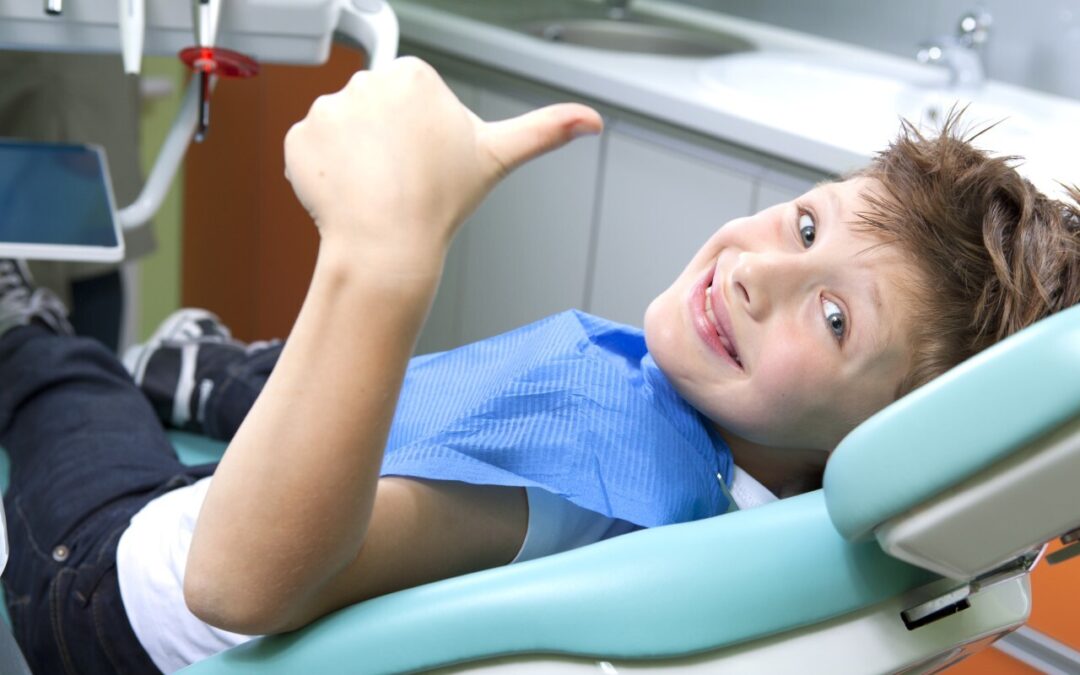Spring is almost here, and with it often comes later bedtimes, busier days and fuller weekends. It’s easy to get caught up in it all and let some other things start to slide. However, one relatively small part of your morning and evening routines needs to remain firmly entrenched: brushing teeth.
Tooth decay, early cavities, and bad breath are all products of poor oral hygiene that we’ve seen in kids. It’s not because parents don’t care about their children’s teeth. To the contrary, our experience has shown us that parents care, very much. The issue is usually education. Parent’s need more guidance in how to care for their children’s teeth and how to teach and instill good dental hygiene habits.
Here we’ve put together a healthy teeth guide for kids (and parents) to help you right here in your own home.
Healthy Guide to Prevent Tooth Decay in Children
When Should We Start Brushing Teeth?
The answer to this one is simple. Start earlier than you may think, before the first tooth has even erupted. Yes, you might not see a tooth in your sweet baby’s gummy smile, but they are there. The primary teeth begin to form, usually, during the second trimester of the pregnancy.
Before any teeth have come through, you’ll want to take a clean, wet washcloth and gently rub it over your baby’s gums. This will wipe away bacteria, and begin to familiarize your baby with the idea of something being put in their mouth that does not have a drinking, eating, or chewing purpose.
Once a tooth has erupted, you’ll switch to an infant toothbrush and use a dab of fluoride toothpaste no larger than the size of a single grain of rice. Start flossing when your baby has two teeth side by side.
At three years of age, you can graduate from grain of rice size to pea sized dab of toothpaste. Around two years old, work with your child to practice spitting out the toothpaste instead of merely swallowing it.
When Should the First Dentist Visit Take Place?
We recommend that kids have their first dentist office visit by the age of one year. We’ll take the time to explain brushing and flossing to your toddler, and even do a quick dental exam. It’s important for your kids to become familiarized with the dentist office early on to both normalize it, and minimize the potential for anxieties and fears to develop and become associated with a trip to the dentist.
Moreover, by the age of one, your little one is likely drinking more than just milk or water, and has definitely graduated to foods. We can identify potential problems early on and help your little one get on track to having a healthy and happy smile.
Why Should You Take Your Kids to a Pediatric Dentist?
Please consider taking your children to a pediatric dentist. The importance of establishing healthy oral hygiene early on in life, makes a huge difference when your kids are older and more independent. A pediatric dentist is specially trained to work with children. In fact, pediatric dentists do an extra two years of dentistry school. We are trained to handle the communication and development limitations that young children have, and our offices are designed to be appealing and comforting to children.
Can You Prevent Cavities?
Yes! Cavities occur when food is left on, in between, or around the teeth instead of being brushed away. Bacteria forms, acid can collect and from there a cavity can form.
There are several things as a parent that you can do to help prevent cavities. As you might have guessed, routine brushing and flossing make the top of that list. Make it part of their morning and nighttime routines if it’s not already. Nevertheless, there are other things we can add to this list.
Fluoride toothpaste is important because fluoride introduced at regular intervals will strengthen your child’s teeth. If your town or city water supply doesn’t have fluoride added, you talk to your pediatric dentist about what you can do to make sure your child’s getting enough fluoride.
Limit their sweets, sodas, and even juices. All those sugars can cause enamel erosion and damage to their teeth. Substitute for water when you can, or try watering down the juice. We recommend you don’t provide soda at all, and if or when you do place limits on how much, and encourage them to rinse their mouths out with water.
Can You Get Rid of Cavities?
Yes, if we determine that your kid does have a cavity, whether it be a cavity on a front tooth, or one more hidden in the back, we can treat cavities. This is typically done by doing a filling, where we literally fill the cavity. For front teeth, we may recommend a composite resin filling that will match the color of the tooth.
Pediatric Dental Treatment Options for Cavities
In spite of all prevention and routine brushing, it’s not uncommon for us to find cavities in the kids we see. Sometimes we may recommend fluoride treatments. Sometimes we may recommend sealants, which is a seal that covers the tooth to protect the enamel all while maintaining the appearance of the tooth.
So, there you have it. A quick guide to healthy teeth for kids. When was the last time your kids were in to see us? We are currently offering $25 gift cards for kids who come in to sit in the big chair and have their teeth cleaned and checked from now through to April 15. That should give you time to fit it into your busy schedules.
We have offices in four convenient locations in the Salt Lake City area, thereby making it easier for you to get your kids in to see us. For more information about those gift cards, go here. We hope to see you soon!


Recent Comments